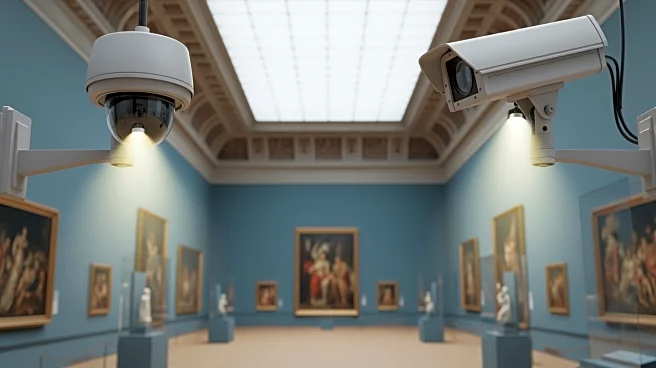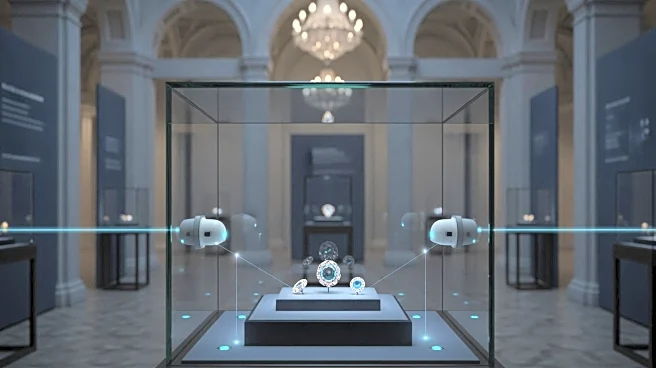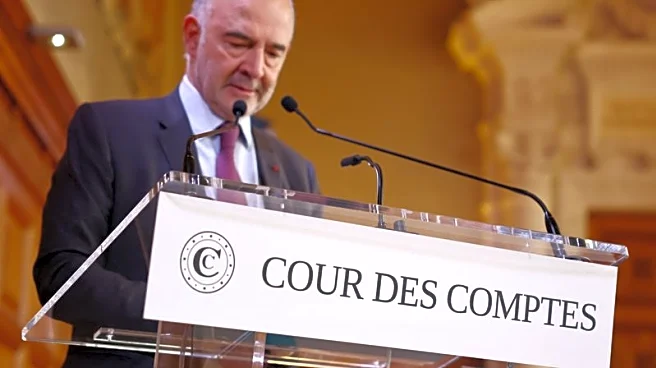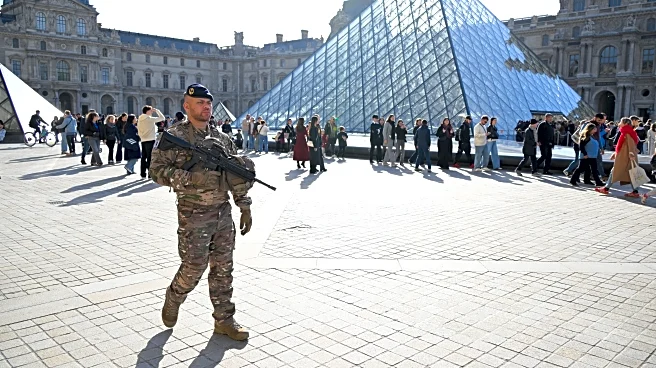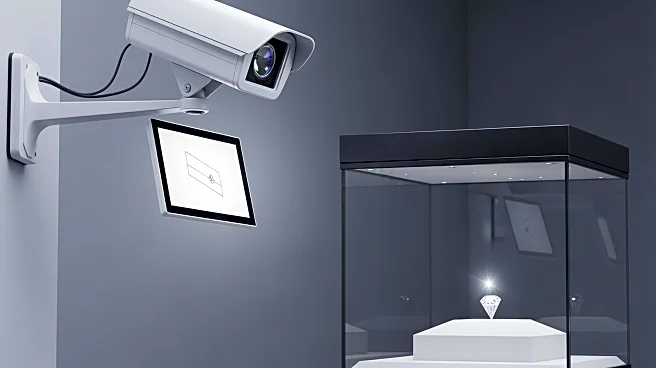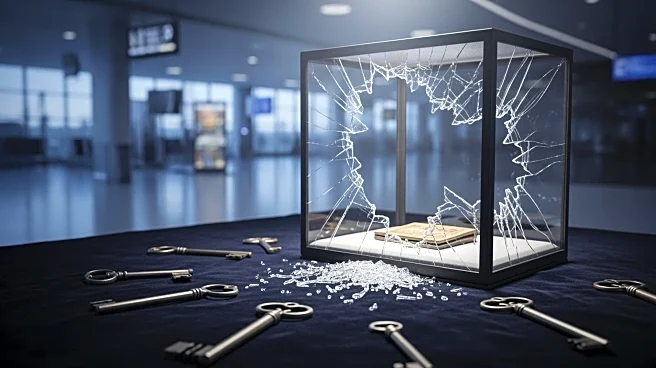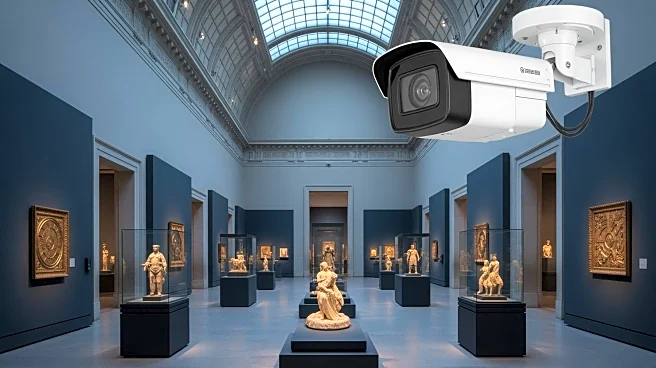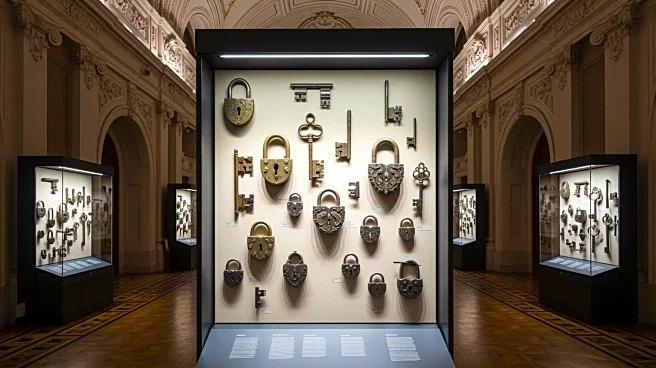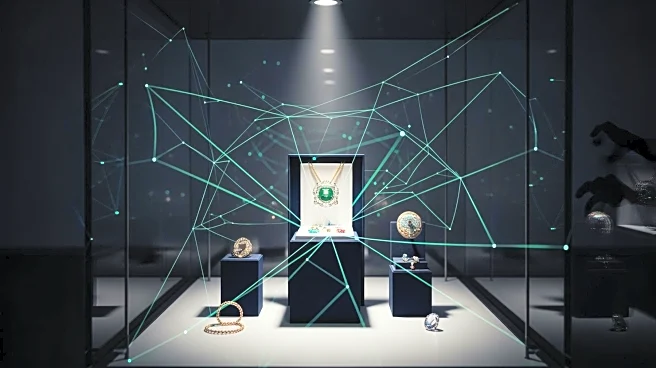What's Happening?
The Louvre Museum in Paris is under scrutiny following a high-profile theft of $102 million in jewels from its Apollo Gallery. An employee revealed that the password to the museum's video surveillance
system was simply 'Louvre' at the time of the robbery, raising concerns about security measures. The theft, which took place last month, involved thieves using power tools to break in and exit the gallery within seven minutes. Despite the museum's alarms and cameras functioning, the security system showed weaknesses due to underinvestment, according to Laurence des Cars, the president and director of the Louvre. Four suspects have been charged, but the jewels remain missing, and at least one suspect is still at large.
Why It's Important?
The revelation of inadequate security measures at one of the world's most famous museums highlights the need for improved security protocols in cultural institutions. The theft not only represents a significant financial loss but also poses a threat to the reputation of the Louvre and its ability to protect valuable artifacts. The incident underscores the importance of robust security systems to prevent similar occurrences in the future. The ongoing investigation and search for the missing jewels could lead to changes in security policies and practices at the Louvre and other museums globally.
What's Next?
French authorities continue to explore all avenues to recover the stolen jewels and apprehend any remaining suspects. The investigation has led to new searches and the seizure of objects for examination. The Louvre's management may face pressure to enhance security measures and address the identified weaknesses. The museum's Apollo Gallery remains closed, and further developments in the case could impact public access and future exhibitions. The situation may prompt other museums to reassess their security protocols to prevent similar incidents.
Beyond the Headlines
The theft raises ethical questions about the responsibility of cultural institutions to safeguard their collections. It also highlights the potential for criminal activities to exploit technological vulnerabilities. The incident may lead to a broader discussion on the balance between accessibility and security in museums, as well as the role of technology in protecting cultural heritage.
